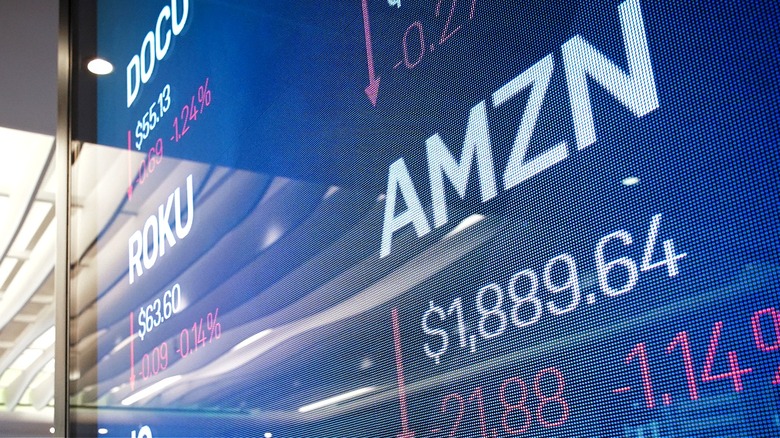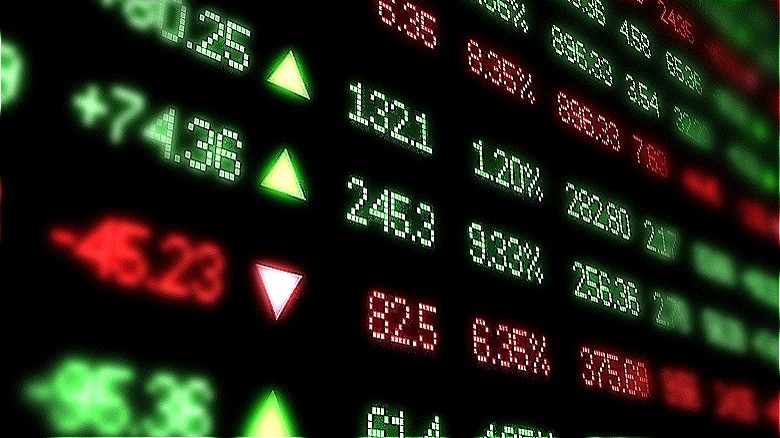Here's How Much Money You Could Have If You Invested In Amazon In 1997
Nowadays, consumers recognize Amazon as one of largest retailers in the world, second only to Walmart. However, there was a time not that long ago when the retail juggernaut only had 340,000 customer accounts worldwide and was operating solidly in the red. Entrepreneur Jeff Bezos (whose business advice you can check out here) launched the venture in 1995 with a goal of being the largest online retailer of books. In 1997, Bezos decided to take the company public, while simultaneously expanding the website's products to include media like CDs and DVDs. At the time of its initial public offering, Amazon shares were priced at $18 each.
At the time of this writing, May 6, 2024, Amazon (NASDAQ: AMZN) is trading at approximately $187 per share, which by itself is impressive when viewed against the IPO price. However, that $187 share price doesn't factor in several rounds of stock splits that occurred over the years for Amazon — most recently a 20:1 split in 2022. Taking all of the splits into account, one share of Amazon from 1997 is equal to an incredible 240 shares in the present. To be clear, that's 240 shares multiplied by the current share price of about $187 — all stemming from buying a single share at $18 in 1997.
But before Money Digest does the math for you to illustrate how you would now be comfortably retired if you invested $1,000, $2,000, or more in Bezos' dream back in 1997, let's take a look at how Amazon added so much value and define what exactly a company stock split is.
How a stock split works
As alluded to in the introduction, a big part of Amazon's meteoric rise was a series of no less than four stock splits over the years. But what does that really mean? Typically, a company will split its stock to increase liquidity and accessibility without affecting the total value of outstanding shares, defined as a company's market capitalization, or "market cap" for short.
For example, company XYZ has 50 shares of stock outstanding that are trading at a price of $400 each, which the company deems too lofty for average investors to afford. To remedy this, company XYZ does a 4:1 (may also be expressed as 4-for-1) stock split. Post-split, there will be 200 shares trading at a price of $100 each.
You might be wondering why a modern-day publicly traded company would go through these machinations when some of the best investment platforms for beginners now allow investors to buy fractional shares? (For instance, buying half a share of an expensive stock.) Besides the fact that fractional shares are something of a recent development, a lower share price also encourages more frequent trading in larger quantities, which can also lead to a lower bid-ask spread, defined as the price difference between buying and selling a share of stock or other security.
Technically, a company's stock split shouldn't have any effect on a company's market cap. But in reality, news of the split frequently draws increased positive attention from investors and is usually treated as an overall bullish event.
What your Amazon IPO stock would be worth today
Besides multiple rounds of stock splits, Amazon has made a lot of other good synergies with regard to expanding its business since its 1997 IPO. For example, Amazon Web Services, a popular cloud provider, now accounts for a full 14% of Amazon's total revenue. Then, there's Amazon's acquisition of dozens of other companies that increased value for its shareholders. Some high-profile examples include Whole Foods, Zappos, MGM, and Ring.
Okay, so let's get to the main event. If you had purchased $1,000 worth of Amazon stock at $18 per share during its 1997 IPO, that would've been 55.56 shares. Factoring in the numerous stock splits over the years, those 55.56 shares would grow to 13,334.4 shares in 2024. Multiplied by the May 6, 2024, share price of ~$187 and that $1,000 investment in 1997 would now be worth $2,493,532.80.
That's right, a mere $1,000 outlay in 1997 would yield investors nearly $2.5 million today (and a hefty tax bill from Uncle Sam). If you missed the proverbial boat, don't feel too bad. Few, if any, early buyers of the money-losing online book retailer likely held their shares for the entire 27 years necessary to generate this miraculous return. The temptation to lock in still-significant profits in earlier years was likely too great for many investors to resist.

